Helen Hunt, 60, Stuns During Her Latest Appearance, and Her Lips Become the Center of Attention

In November 1922, a boy walked through the desert mountains of Egypt and discovered some ancient steps carved into the rock. Subsequently, this find became one of the world’s largest and most significant archaeological discoveries.
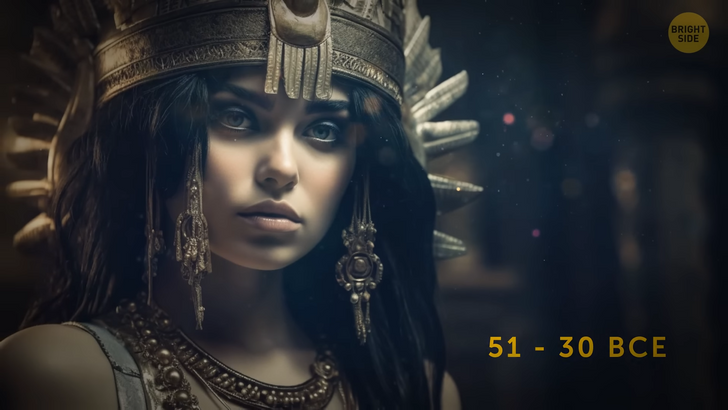
This step was part of Tutankhamun’s untouched tomb. Archaeologists found about 5,000 ancient objects, including jewelry, fabrics, painted vases, and funeral masks. You’ve probably seen one of them. It has become one of the most recognizable attributes of Ancient Egypt.
More than a hundred years have passed since then. And now, humanity has finally become close to another large-scale discovery — the tomb of Cleopatra. This queen was the last active ruler of the Ptolemaic kingdom of Egypt, who sat on the throne from 51 to 30 BCE. There are many ancient records about Cleopatra, her reign, and her unusual personality.
But until now, no one has discovered the secrets about her passing away and the burial place. So, one archaeologist Dr. Kathleen Martinez has been studying ancient records and temples around Alexandria for decades and concluded that the tomb of the queen should be located under the ancient city of Taposiris Magna, founded in 280 BCE.
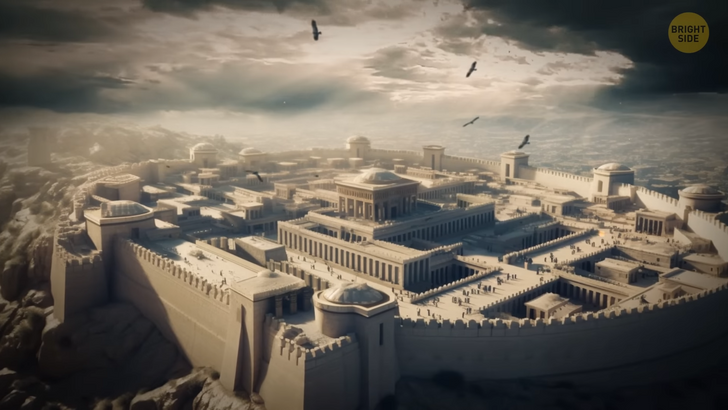
It was a big city on the Northern Coast of Egypt where tens of thousands of people were engaged in trade and industry. And it seems that Dr. Martinez’s guesses turned out to be correct. She and a group of archaeologists have discovered a secret underground tunnel near Alexandria with a length of about 0.8 miles. It was cut into the rock under Taposiris Magna’s temple.
During further excavations, they found many things that indicate Cleopatra’s tomb lies in the tunnel’s depths. It’s also possible that she is buried there together with the Roman commander Mark Antony. According to ancient records, Cleopatra and Mark Antony loved each other and together opposed the Roman Senate, which declared Antony a traitor.
The fact that natural disasters have occurred on the territory of Taposiris Magna for thousands of years can complicate the excavations. Earthquakes and floods destroyed the city and possibly flooded its underground tunnels. But archaeologists hope the ancient tomb remains untouched and that it hides many treasures and records about the royal life of Ancient Egypt during the reign of the last dynasty.
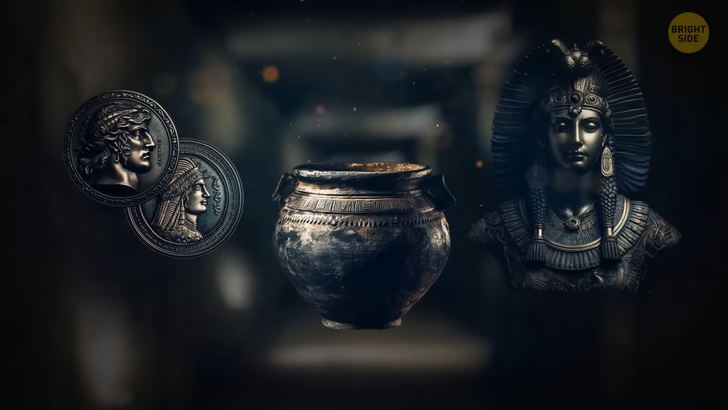
There’s a chance that excavations will go underwater and in the mud. This will require much time and funding, but archaeologists are sure it’s worth it. Anyway, it’s too early to say that Cleopatra is really buried there, but scientists have found many things in the tunnel that confirm this, including clay pots, dozens of coins with the image of Cleopatra and Alexander the Great, as well as a bust with the image of the Egyptian Queen.
Cleopatra is still one of the most popular personalities in Egypt, on an equal footing with Ramesses III and Tutankhamun. She inspired many films, paintings, and books. But what made her so popular? She became famous for her inconsistency. She was a beautiful, intelligent ruler who pulled Egypt out of the crisis and made it a prosperous power. Medieval Arabic texts say she knew chemistry, mathematics, and philosophy and may have written several scientific books. She knew several languages and had excellent diplomatic skills.
At the same time, there are many legends that she was a femme fatale who drove many men crazy. However, there’s no evidence that her beauty was incomparable. The image of a stunning model was created by Hollywood when it made several films where famous actresses performed the role of Cleopatra. And the Roman emperor Octavian, the adopted son of Julius Caesar, specially created the image of Cleopatra as an insidious seductress because he was her enemy.
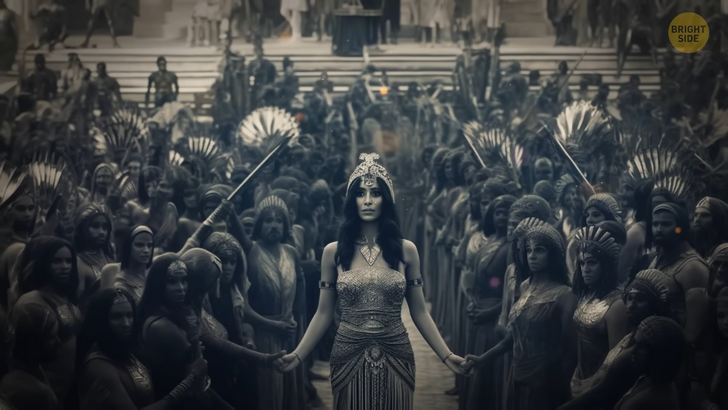
Even though she was born in Egypt, Cleopatra wasn’t an Egyptian. Her ancestors were Greeks, among whom was one of the generals of Alexander the Great. However, the people of Egypt loved her. She learned the language and was very sensitive to the traditions of this country. She knew the history, mentality, and customs of Ancient Egypt well. She raised the level of its economy and strengthened its status as a world power.
Much of this was made possible thanks to her cunning and impressiveness. She loved theatrical performances and lavish celebrations. She knew how to surprise people and put on a show. But behind the exterior image of a luxury lover was an intelligent and calculating ruler. Ancient Egypt was a rich, luxurious country, and Cleopatra did everything to increase its wealth and strengthen its position in the international arena.
For example, she was once in conflict with her brother Ptolemy XIII. The queen knew that she wouldn’t be able to resist him, so she decided to attract Julius Caesar to their side. The Roman emperor arrived in Alexandria, where Cleopatra wanted to meet him. But Ptolemy knew about her plans and was about to prevent her from coming to Caesar.
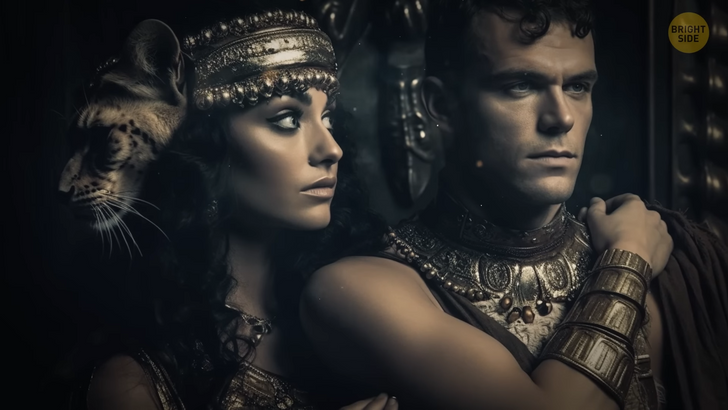
Then, instead of a rich and noisy arrival, Cleopatra decided to make her visit inconspicuous. She wrapped herself in a carpet or linen bag the emperor’s servants carried into Caesar’s private chambers. Cleopatra emerged from the carpet and impressed the Roman Emperor with her beauty and determination. As a result, they fell in love with each other and became close allies. After some time, she impressed another influential Roman for diplomatic purposes. She arrived to meet Mark Antony on a golden barge with purple sails and silver oars.
Cleopatra was dressed in the image of Aphrodite and sat under a magnificent canopy. Her servants dressed like cupids and were blowing her fan and burning incense. But Cleopatra created such a show for a reason. She knew that Antony revered Greek mythology and considered himself the embodiment of Dionysus. As a result, he was so impressed with this woman that he ended up marrying her. Cleopatra defended her crown, strengthened her alliance with Rome, and bore Antony three children.
In Egypt, they threw big parties and enjoyed wealth with power. However, the relationship of a high-ranking official with the Egyptian queen caused a scandal in Rome. Octavian was Antony’s primary opponent in the struggle for power, so he exploited the situation to darken the competitor’s reputation. He used propaganda to make Cleopatra an insidious seductress in the eyes of Roman citizens. He accused Antony of succumbing to her charms. The Roman Senate supported Octavian and declared Cleopatra an enemy.

In 33 BCE, this conflict reached a high point when Antony’s navy clashed with Octavian’s fleet. The latter won and forced his enemy to flee to Egypt with Cleopatra. According to some records, they took refuge near Alexandria. Pursued by the Romans, they hid in one of Cleopatra’s palaces and met their end. Some legends say that Cleopatra was an expert in poisons. She provoked a venomous snake — a viper or an Egyptian cobra — to bite her.
Also, according to another legend, she pricked herself with a poisonous needle. There’s a theory that Cleopatra always carried an ampule with poison inside her hairbrush. And when she was cornered, she soaked the needle with this poison and pricked herself. None of this can be said for sure. Scientists are still trying to find out the truth. Perhaps when they reach Cleopatra’s tomb, the world will get more answers about her tragic fate.
She is considered the last ruler of Egypt. After her passing, Octavian plundered her palaces and temples and returned to Rome, where he became the main emperor. He successfully ruled the country and expanded its borders. His reign ended when he turned 75. World history would have looked different if Cleopatra and Mark Antony hadn’t lost that naval battle.
By the way, did you know that more time has passed between Cleopatra’s reign and Neil Armstrong’s flight to the moon than between the reign of the Egyptian queen and the construction of the Great Pyramid of Giza? Armstrong took a step on the Earth’s satellite in 1969, 2038 years after the birth of Cleopatra. And the construction of the pyramid took place in 2560 BCE. Imagine how long the history of Ancient Egypt is. Cleopatra is closer to us in time than to the pyramids.











